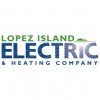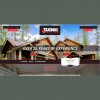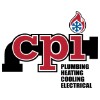
It is the heating system of choice throughout Europe where energy has been historically more expensive. Beyond efficiency, an added benefit is the comfort of a radiant heating system vs. conventional forced air. Heat is delivered where it is needed and without ducting, it is quiet. When considering Life-Cycle cost a hydronic system can be the less expensive system.
We have updated systems that were more than 40 years old. Today's equipment has only gotten better and more efficient. Use our website to check out what is possible! Designing high performance hydronic heating systems involves a knowledge of fluid mechanics, heat transfer and control theory. We have that expertise. We specialize in energy consultation and system design for residential and light commercial installation.
Our focus is the system's end-user, the owner and operator - YOU! Our starting point is your drawing package and your preferences as detailed on the "Project Design Survey" downloadable under our Terms and Conditions tab.
We have updated systems that were more than 40 years old. Today's equipment has only gotten better and more efficient. Use our website to check out what is possible! Designing high performance hydronic heating systems involves a knowledge of fluid mechanics, heat transfer and control theory. We have that expertise. We specialize in energy consultation and system design for residential and light commercial installation.
Our focus is the system's end-user, the owner and operator - YOU! Our starting point is your drawing package and your preferences as detailed on the "Project Design Survey" downloadable under our Terms and Conditions tab.
Services
About
Report
Jeff and Diana Holmes, and family, have lived quite comfortably in a hydronic heated home of their own design since 1992, complete with biomass boiler.
Jeff is a retired engineer from the hydrocarbon industry where he specialized in fluid flow and heat transfer.
With added family, Diana instigated the 1992 home remodel, even to the point of drawing floor plans.
At that time, the house, built in 1979, had an electric forced air heating system and a wood stove/fireplace in the living room.
Even then, the wood stove did most of the heating, at some mess of course, but that's the way of wood heat.
Jeff is a retired engineer from the hydrocarbon industry where he specialized in fluid flow and heat transfer.
With added family, Diana instigated the 1992 home remodel, even to the point of drawing floor plans.
At that time, the house, built in 1979, had an electric forced air heating system and a wood stove/fireplace in the living room.
Even then, the wood stove did most of the heating, at some mess of course, but that's the way of wood heat.
Design Guidelines
Report
We do not sell or represent a particular manufacturer.
We work with a range of wholesalers.
The benefit for you, the client, means the best design, which incorporates the strengths and economies of many manufacturers.
Our design philosophy is one of simplicity, which will minimize the equipment installed, saving upfront costs, and more importantly - the costs over time to maintain.
We believe that energy is a finite resource to be conserved.
Before we begin a heating design we typically do the heat-loss calculations for your building and suggest insulation/construction practices to maximize heat conservation.
We work with a range of wholesalers.
The benefit for you, the client, means the best design, which incorporates the strengths and economies of many manufacturers.
Our design philosophy is one of simplicity, which will minimize the equipment installed, saving upfront costs, and more importantly - the costs over time to maintain.
We believe that energy is a finite resource to be conserved.
Before we begin a heating design we typically do the heat-loss calculations for your building and suggest insulation/construction practices to maximize heat conservation.
Design
Report
The In-Floor Tubing Plan details all of the PEX circuits and manifolds.
This detailed installation, locates the area manifolds and the home-run lines back to the mechanical room.
Line sizing and line spacing is based on thermal requirements and system hydraulics - where system loss is calculated with respect to the circulator pump head (Delta P).
Generally we size for a low Delta T to maximize Boiler or heat pump efficiencies.
Radiant wall panels can be considered in areas such as bathrooms where additional quick heat might welcome.
This detailed installation, locates the area manifolds and the home-run lines back to the mechanical room.
Line sizing and line spacing is based on thermal requirements and system hydraulics - where system loss is calculated with respect to the circulator pump head (Delta P).
Generally we size for a low Delta T to maximize Boiler or heat pump efficiencies.
Radiant wall panels can be considered in areas such as bathrooms where additional quick heat might welcome.
Fuel Calculator Spreadsheet
Report
Energy Sources - Download our Excel spreadsheet, which will allow you to evaluate and compare heating energy sources from gas, oil, heat pumps (air source and ground source) even biomass in this case soft and hard woods and also wood pellets.
An added plus is that wood is a renewable resource and is carbon neutral.
However, at this point, the only wood appliances that can be legally installed in the state of Washington are certified wood stoves.
Wood fired boilers are not allowed even though some of the wood gasification boilers are high efficiency and virtually smoke free.
An added plus is that wood is a renewable resource and is carbon neutral.
However, at this point, the only wood appliances that can be legally installed in the state of Washington are certified wood stoves.
Wood fired boilers are not allowed even though some of the wood gasification boilers are high efficiency and virtually smoke free.
Heat Pumps
Report
Hydronic heat is also compatible with Heat Pumps.
The Coefficient of Performance or COP of a heat pump is based on input/output temperature and can be as high as 5 in a properly designed system.
This means that every horsepower-hr (or BTU) shaft horsepower into the heat pump compressor, results in 5 BTU's of heat into the home.
This compares to an electric room heater or electric baseboard where one energy unit into the heater results in one energy unit out.
A more expressive way to phrase it - the heat pump is 500% more efficient, compared to the electric heater at only 100%.
The Coefficient of Performance or COP of a heat pump is based on input/output temperature and can be as high as 5 in a properly designed system.
This means that every horsepower-hr (or BTU) shaft horsepower into the heat pump compressor, results in 5 BTU's of heat into the home.
This compares to an electric room heater or electric baseboard where one energy unit into the heater results in one energy unit out.
A more expressive way to phrase it - the heat pump is 500% more efficient, compared to the electric heater at only 100%.
Reviews

Be the first to review Hydronic Heating Design.
Write a Review



